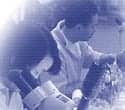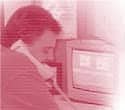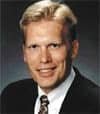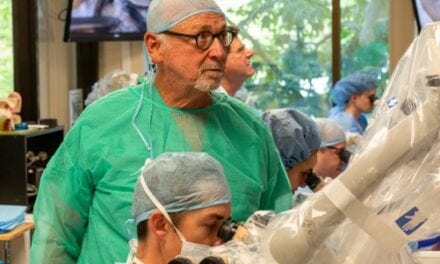
A look of surprise and delight, a tear in the eye, that is the measure of success for the employees of Walker Ameriphone, a division of Plantronics Inc, Chattanooga, Tenn. “Our products help change people’s lives,” says Matt Hutchinson, director of marketing for Walker Ameriphone. “[Hearing loss] isn’t a problem that is going away, it is a problem that is increasing. It’s all about impacting somebody’s life.” The manufacturer of amplified telephones has been in business since 1969.
Total commitment to the customer is the hallmark of Walker Ameriphone. And this commitment has developed a customer cadre that is just as devoted to the company and its products. This is because, says Hutchinson, the product is durable, high quality, and subject to few defects. “We believe customer intimacy is the key,” says Hutchinson. “But you can’t be customer intimate, if you do not provide solutions or service that help them and help them understand that it’s okay to have a problem. It’s okay to have hearing loss.”

The average Walker Ameriphone customer has mild to moderate hearing loss and is 71 years old. About half of its customers are hearing aid users. The company’s amplified phones have 26 dB to 50 dB of gain and include an array of features such as large keys and emergency buttons for police and fire departments. Hutchinson says that the technology is intuitive, making it instantly accessible to all customers.
The intuitive nature of the product means that company designers must never lose sight of customer needs. “We actually scale ourselves back each and every time we work with the engineers—we say, ‘here’s what we want to give them, here’s what they need, how much choice will they really tolerate?’” says Hutchinson. “There is always going to be somebody who wants a lot of features, but most of our customers are looking for only one feature and that’s to hear on the telephone.” Ultimately, the company’s product lines are dictated by market needs, which are part of the development process.
Developing Intuition
Walker Ameriphone’s engineers and designers do not spend their days ensconced in the laboratory. Instead, as part of their work, they go out on sales calls and work the customer service lines—keeping the needs of the customer at the forefront of their minds. “I [believe] that as I add technology to the product to deliver a higher-powered solution, the product should get easier to use,” says David Lashley, director of engineering for Walker Ameriphone. “I think the person who is using it is struggling with enough in their life already without having to keep the manual underneath the phone in order to use the thing.”

Once a need is identified, the development team goes into action shepherding the new idea through research and development, testing, and production, a process with a surprisingly short duration—averaging 6 to 12 months. “In the background all the time, we have R & D going on with an emphasis on the research part of it,” says Lashley. “We have a separate development effort that is coordinated and project- managed from the United States, and it is essentially like a big sponge. It absorbs all these ideas from marketing, it pulls in the latest research that’s available to be deployed in the product, and it takes into account the [production] leverage that we have in Asia. The benefit to us is that we have faster cycle times, and we are able to spend more time in research because a lot of our production engineering comes out of Asia.”
Testing of the new products is handled by the staff and a group of end users who use the product in both the laboratory and their everyday lives. Once tests are completed, the product is then made by a facility in southern China.

The Walker Ameriphone amplified telephones do more than just amplify sound, says Lashley. “For years all people were really doing was taking a standard telephone, amplifying the voice, providing volume control in a convenient place, and selling that phone to the public,” he says. “Walker Ameriphone engineers have years of audio engineering experience and constantly improve the performance of their circuits, but the division really excels at getting the big picture right. We make sure that all the little features are there to satisfy someone that needs our type of product. From ringers that operate at low frequency and at over a 30 dB range to buttons that are easy to find and actuate, we are constantly striving to make the product more complex and powerful while making sure that the operation is intuitive and that the customer can use it right out of the box.”
But for all the company’s commitment to its customers, Hutchinson admits that there is not one Walker Ameriphone amplified phone for everyone. “Not all sizes fit all,” he says. “What is the problem you’re solving? Grandpa can’t hear his granddaughter say, ‘I love you’ on his birthday. He can’t do that on the telephone. He might be able to do that live, but he doesn’t have the high-frequency hearing he used to have. He’s got high-frequency hearing loss. That person can walk into Radio Shack and buy a phone. Folks that have more hearing loss we have a different profile for. They usually understand their problem. They might have half their hearing or 20% of their hearing. They’re willing to spend more money on a solution because they need to hear. Then we go to the person who is deaf and they’re going to end up buying a TTY. It’s just what kind of TTY do they want and what is their price sensitivity.” This variety of profiles allows the company to reach its end users in several different ways.
Going to Market
The company’s marketing efforts are unusual because it does not sell its products directly, leaving that task to other distributors. Products for those suffering from mild hearing loss are available at K-Mart and Radio Shack. The latter is developing a special needs section in its stores to highlight Walker Ameriphone products. “It’s more special needs focused on the mass market—it’s not as focused as an [audiologist’s office],” says Hutchinson. “When you go to moderate to severe [hearing loss], you’re looking at state programs such as those in Florida, California, and Massachusetts, and you’re looking at special needs distributors such as HITEC or Harris or Hall up in Canada. They’re really focused on moderate to severe hearing loss and they sell a lot of TTY and special needs [products].” In addition, several regional Bell companies and Verizon are offering Walker Ameriphone products.
Because 50% of the company’s end users also have hearing aids, audiologists are another avenue of distribution. “We actually do a lot of our Ameriphone products with audiologists,” says Hutchinson. “We meet with them regularly. We talk to them a great deal [and have learned] that the audiologist channel is really wide open. Customers don’t always need a hearing aid.”
Once a channel succeeds and an end user purchases an amplified phone, Walker Ameriphone’s commitment to the customer begins. The company offers an array of customer support options no matter who sold the product. “Any time there’s a product problem, you just return it to us and we send it back,” says Hutchinson. “We can answer any of the calls. We know how to talk to these customers. We are very familiar with the end user. We understand that when somebody calls up, they might not even be able to hear us. We actually have some outgoing amplification on our customer service line so they can hear a lot better when they call in. We have a test line. If somebody wants to test the amplification feature [on the phone], they can call in and see if it works for them.”
Another channel the company uses to get its message out is education. In late February 2003, Walker Ameriphone and the EAR Foundation announced that they were forming a partnership to educate and assist the hard of hearing public. The partnership will be focused through the EAR Foundation’s Senior EARs educational program. In addition, there will be a campaign called Listen or Lose It, which will consist of a series of public service announcements and other outreach programs aimed at educating the public on how to prevent ear damage from sound exposure.
However, the public is not the company’s only concern. It has developed a corporate culture that has resulted in low turnover and high motivation.
Being the Best
Walker was founded in 1969 by Wesley Walker, a former engineer for Southern Bell. The company’s first amplified phone was developed in 1975. In 1986, the company was acquired by Plantronics Inc, a provider of handsets to telephone companies and the business community. Walker competitor Ameriphone was acquired by Plantronics and merged with Walker in 2002.
Walker Ameriphone has locations in both Chattanooga, Tenn, and Garden Grove, Calif, and employs about 64 people. As a member of the 2,500-person-strong Plantronics Inc, the company also has access to the resources of its parent, leveraging those where and when needed.
Hutchinson says the company is built around teamwork. “We’re working together whether it is feedback from customer service or sales or marketing or engineering,” he says. “We’re getting together and brainstorming. What’s the best product to make, the best way to service it, the best way to navigate the product. We really take that seriously, and that’s really diffused throughout the corporate culture. It’s kind of fun to work here. It’s nice to get a letter back that says, ‘I love your product, you guys are the best.’”
It is this combination of a reliable product, customer support, and a good work force that makes the company stand out in the market. “When it comes to technology and serving the market, we are constantly staying ahead of the game,” says Hutchinson. “We really are revered as the pioneer in this industry, and I think we are a very, very strong icon in the industry. But we always have to earn that respect.”
And though the company is reaping the benefits of its corporate philosophy, it still has new markets to conquer.

Designing the Future
One of the new markets for Walker Ameriphone is caregivers. “Many of our customers now are buying products for their parents,” says Hutchinson. “And if you want to see a trend that is going to explode, just watch those caregivers. They are all rock and rollers, they’re all Baby Boomers, and they all have hearing loss and they all know it. But they want to be hip and kind of cool, so the products we have coming out are stylish, cool-looking devices.” To achieve the cool factor, the company brought in an industrial design firm, which had to balance styling with functionality.
In the end, Walker Ameriphone offers a product that is much more than just an amplified telephone. “That product becomes a lot more than a telephone for [our customers],” says Hutchinson. “Our products can improve the overall quality of life for someone who may have withdrawn from their family and friends as a result of hearing loss. We are making it comfortable and easy for people to communicate on the phone again. We are reuniting grandparents with grandchildren and parents with their children. It allows people to maintain their independence. When you have a product that can make that kind of difference in a person’s life, you know you have something special. It is a great feeling knowing that the work we do can profoundly impact the lives of the people who use [our technology].”
Chris Wolski is associate editor of Hearing Products Report.





